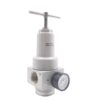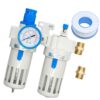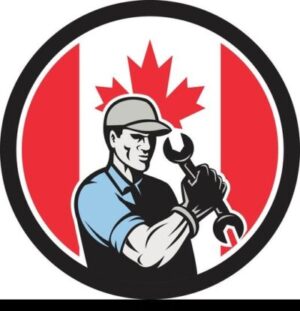Pneumatic cylinders, also called pneumatic actuators, provide linear or rotary motion and force to automated systems and devices. You need to ensure that the pneumatic cylinder is right for the system it was built for and it’s correctly maintained during operation. This can help you provide trouble-free and long-term performance. Even when you maintain the cylinder properly, sometimes pneumatic cylinders need to be repaired.
All mechanical devices have estimated serviceability, which is determined by long-term tests conducted by the manufacturers. When a cylinder fails unexpectedly, it can disrupt production and pose a risk to both the machine operator and the equipment.
There are some cases when pneumatic cylinders fail, let’s see some of the most common causes.
-
Contamination
Contaminants can clog the pneumatic cylinder's operational parts, restricting free movement and resulting in reduced functionality or complete failure. Pollutants might enter the system from the pneumatic air supply or the operational environment. Contaminants include oil, water, particulate matter, etc.
Water and oil clogging affects the finish of the barrel or rod and prevents orifice flow. All of these factors cause unplanned equipment failure, repairs, and pricey downtime.
-
Side Loading
Side loading happens when pressure is applied laterally to the cylinder's axis which can cause plenty of issues that can easily lead to cylinder failure.
Some of the issues that side loading causes are seal failure, quick bearing wear, cylinder tube scoring, etc. Side loading can be caused by improper installation. When side loading occurs, a pneumatic cylinder needs to be repaired and then it can be used again, but you must ensure proper cylinder installation.
-
Problems With Synchronization
Complex movement systems are common in modern machinery, and it requires several cylinders to move in a synchronized order. Methods of synchronization differ, but all must be regulated and maintained to ensure proper operation.
When pneumatic cylinders are out of synchronization, the machine will not operate properly, increasing the risk of cylinder failure. Synchronization-related faults frequently require the replacement or repair of the cylinder.
-
Not Lubricated
Catastrophic failures occur when cylinder seals are not properly lubricated as they will dry out. A pneumatic cylinder's trouble-free operation depends on proper lubrication. The lubricating condition of the seals can be determined by doing regular maintenance.
-
Operating Over Limits
When pneumatic cylinders operate outside of their certain pressure range and energy limit, they are prone to damage. High loads stress the internal components of the cylinder, resulting in decreased performance and, eventually, premature failure. The operational parameters under which the pneumatic cylinders continually function must be monitored as part of an appropriate preventative maintenance program.
-
A Leak
Because even the best things wear out over time, you must stay on top of any possible leaks. All worn components including air hoses should be replaced. When technicians turn on a system, they should double-check all of their connections and pneumatic actuators.
-
Poor Maintenance
Poor maintenance can also lead to cylinder failure. Taking some time each day to maintain your equipment may help to significantly lessen the likelihood of a catastrophic failure. Conducting system inspection, including visual inspection and checking any documentation that your equipment has can help you maintain your cylinders properly.
Factors To Lower the Risks of Pneumatic Cylinder’s Failure are:
- Conducting a visual inspection by walking around your equipment to see if there are any issues.
- The cylinder should be installed correctly. Always make sure you're using the right tools and accessories.
- To prevent contamination from entering the system through pneumatic fittings, make sure the fittings are properly sized and installed. Contamination is frequently caused by rusted and improperly sealed fittings.
- Filters should be changed on a regular basis according to the manufacturer's recommendations to guarantee the best protection for your pneumatic components.
- Always follow the manufacturer's torque recommendations as over-torquing can be just as dangerous as under-torquing.
If you want to purchase pneumatic cylinders for your applications, contact us today!



